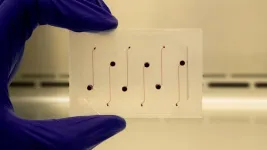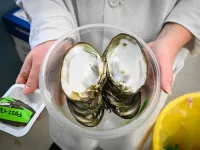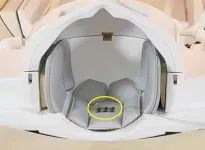(Press-News.org) Polygenic risk scores (PRSs) are estimates of an individual’s susceptibility to a specific complex trait obtained by aggregating the effects of dozens, thousands, and potentially millions of genetic variants associated with that specific trait into a single figure. Some private companies now market PRS embryo screening to prospective parents through the use of in vitro fertilisation and pre-implantation genetic testing. While PRS has great potential for prediction in live-born (mostly adult) individuals, its accuracy is still far from perfect. And this is even truer for its use in the selection of pre-implantation embryos (PGT-P), say the Japanese scientists who have discovered just how inaccurate and inconsistent the outcomes can be. Their results will be presented at the annual conference of the European Society of Human Genetics today (Saturday).
Using large-scale computational simulations and data from BioBank Japan, Dr Shinichi Namba, from the Department of Genome Informatics, Graduate School of Medicine, University of Tokyo, Japan, and colleagues, constructed PRSs for PGT-P to predict adult height, as well as the risk for Type 2 diabetes (T2D). They selected randomly 500 males and 500 females from whom they simulated couples. From each of these couples they simulated ten embryos, and then applied the six most widely-used PRS methods to predict height and diabetes data for these embryos.
When they evaluated the ‘best’ embryos, i.e. those predicted to be the tallest and those with the least diabetes risk selected by each method, they were surprised to find that there was little or no concordance between them. “We had not been expecting such a lack of robustness. No combination of two PRS methods selected the same embryo over half the time. The lowest-ranked embryo ranked using one method could be the top-ranked in another. Even worse, simply repeating the same method produced a different embryo rating each time, and this pattern was the same when screening for both height and T2D.
“There is no single state of the art method, and individual researchers use the one they prefer, but our results were so conclusive that we can say confidently that PRS scores in embryos are basically worthless at present,” says Dr Namba. “There is little point in following up this research until the technology improves.”
Many conditions are caused by a combination of genetics and environment, and PRSs are only able to capture parts of any of the relevant genetic component, which is itself likely to be highly complex and difficult to analyse. Using PRS screenings in order to select a ‘suitable’ embryo means that many embryos would have to be discarded, perhaps unnecessarily, and this would be unethical. In the context of fertility treatment there are usually very few embryos to choose from to begin with, so it is important that the choice of one over another be based on sound evidence.
”While pre-implantation testing for conditions with a single genetic cause is evidence-based, this is not the case for PRSs. I believe that companies selling this service to prospective parents should clearly state its limitations and acknowledge the inaccurate and inconsistent nature of the results,” says Dr Namba. “And while we understand the desire to have a healthy baby, should we ever arrive at a stage where the accuracy of this technology is much improved it should not be made widely available without a society-wide debate taking place.”
Professor Alexandre Reymond, from the Center for Integrative Genomics, University of Lausanne, Lausanne, Switzerland, and chair of the conference, said: “These results align perfectly with the ESHG recommendation regarding the use of polygenic risk scores in pre-implantation genetic testing, i.e. that it is at the moment both unproven and unethical”.
(ends)
END
Polygenic risk scores give inaccurate and highly inconsistent results in embryo selection
2024-06-01
ELSE PRESS RELEASES FROM THIS DATE:
Molecular profiling improves diagnosis and survival for children with high risk cancers
2024-06-01
Berlin, Germany: Cancer is the leading cause of disease-related death in children in most developed countries, and at least a quarter of these patients are diagnosed with aggressive high-risk or relapsed cancers, with an expected five-year survival rate of less than 30%. Accurate diagnosis can be difficult, and survivors often suffer life-long side effects because of the toxic treatments needed to cure them. Now, researchers from Australia have shown that, by using precision medicine*, it is possible not only to obtain more accurate diagnoses, but also that using precision-guided, targeted treatments earlier improves the two year progression-free ...
New FRIB precision measurement program advances understanding of proton halos
2024-05-31
In May 2022, the Facility for Rare Isotope Beams (FRIB) at Michigan State University (MSU), launched its precision measurement program. Staff from FRIB’s Low Energy Beam and Ion Trap (LEBIT) facility take high-energy, rare-isotope beams generated at FRIB and cool them to a lower energy state. Afterward, the researchers measure specific particles’ masses at high precision.
The LEBIT team, led by Ryan Ringle, adjunct professor of physics at FRIB and in the MSU Department of Physics and Astronomy and senior ...
A greener, more effective way to kill termites
2024-05-31
UC Riverside scientists have discovered a highly effective, nontoxic, and less expensive way to lure hungry termites to their doom.
The method, detailed in the Journal of Economic Entomology, uses a pleasant-smelling chemical released by forest trees called pinene that reminds western drywood termites of their food. They follow the scent to a spot of insecticide injected into wood.
“We saw significant differences in the death rates using insecticide alone versus the insecticide plus pinene,” said UCR entomologist Dong-Hwan Choe, who led the discovery. “Without pinene, we got about 70% mortality. When we added it in, it was over 95%.
Native ...
Engineered circulatory systems may help fight disease
2024-05-31
The pharmaceutical drug development and approval process is a multi-step undertaking that requires a plethora of testing before reaching the market. Even then, humans respond differently to drugs depending on their individual bodies and medical needs.
Dr. Abhishek Jain, associate professor in the Department of Biomedical Engineering, and his lab received a grant from Texas A&M Innovation to continue developing an advanced vessel-chip deployment platform for large-scale pharmaceutical testing services that holds promise for ...
Moffitt Cancer Center and Virogen Biotechnology forge groundbreaking partnership to accelerate oncology and immunotherapy innovations
2024-05-31
TAMPA, Fla., and PLEASANTON, Calif. — Moffitt Cancer Center, a world-renowned cancer treatment and research center, and Virogen Biotechnology Inc., a clinical-stage biotechnology company, announced a groundbreaking strategic partnership today. This collaboration aims to propel the development of Virogen's cutting-edge fusion protein, VG712 (Resimmune), addressing significant unmet needs in oncology and immunotherapy.
Under this strategic alliance, Moffitt will offer Virogen priority access to ...
Ivonescimab plus chemotherapy in non–small cell lung cancer with EGFR variant
2024-05-31
About The Study: Ivonescimab plus chemotherapy significantly improved progression-free survival with tolerable safety profile in patients with non–small cell lung cancer who previously underwent EGFR tyrosine kinase inhibitor (EGFR-TKI) treatment and may offer a new treatment option for patients with TKI resistance.
Quote from corresponding author Li Zhang, M.D.:
“For patients with non-small cell lung cancer whose illness has progressed while receiving EGFR tyrosine kinase inhibitor (EGFR-TKI) therapy, especially the ...
Mussels downstream of wastewater treatment plant contain radium, study reports
2024-05-31
UNIVERSITY PARK, Pa. — Burrowed into streambeds and rarely moving for their decades-long lifespans, freshwater mussels are biomonitors, meaning they indicate how clean their environment is, according to Penn State researchers. As the bivalves feed on organic matter and filter the water around them, their inner tissues and hard shells begin to reflect whatever is in their environment — including radioactive particles.
A pair of researchers from Penn State’s Department of Civil and Environment ...
This self-powered sensor could make MRIs more efficient
2024-05-31
MRI scans are commonly used to diagnose a variety of conditions, anything from liver disease to brain tumors. But, as anyone who has been through one knows, patients must remain completely still to avoid blurring the images and requiring a new scan. A prototype device described in ACS Sensors could change that. The self-powered sensor detects movement and shuts down an MRI scan in real time, improving the process for patients and technicians.
During an MRI scan, a patient must stay entirely still for several minutes at a time, otherwise “motion artifacts” could appear and blur the final image. To ensure a clear picture, patient movement needs to be identified as ...
Cognitive declines preceding Alzheimer’s diagnosis lead to credit card, mortgage delinquency
2024-05-31
(May 31, 2024) — In the years prior to an Alzheimer’s disease or other memory disorder diagnosis, credit scores begin to weaken and payment delinquency begins to increase, concludes new research led by Georgetown University. The findings show consistent deterioration in these financial outcomes over the quarters leading up to diagnosis. The findings also show that credit card and mortgage delinquencies, specifically, both increase substantially prior to diagnosis.
The research was released today by the Federal Reserve Bank of New York (FRBNY). (“The Financial Consequences of Undiagnosed Memory Disorders”).
“Most memory disorders ...
Eye-tracking techniques could help primary care providers diagnose autism sooner, more accurately
2024-05-31
INDIANAPOLIS — Nearly 3% of all children in the United States are diagnosed with autism, according to the Centers for Disease Control and Prevention. But a collaborative team of researchers at Indiana University and Purdue University are finding ways to make the right diagnosis sooner.
“The number of children needing autism evaluations exceeds the capacity of specialists trained to provide this service,” said Rebecca McNally Keehn, PhD, assistant professor of pediatrics at the IU School of Medicine. “Children and their families are currently waiting a year or more to access evaluations. ...




